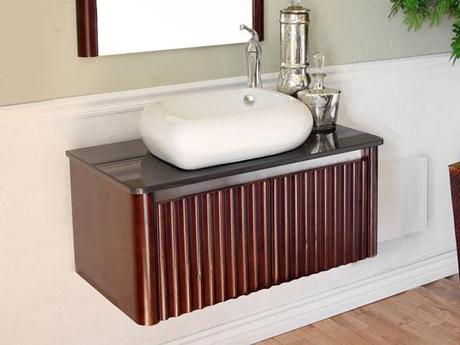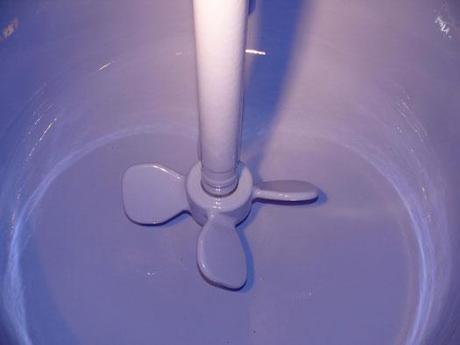The most popular materials for bathroom sinks are vitreous china and porcelain. Many times, people wonder what’s the difference between vitreous china and porcelain. It’s difficult to get a straight answer when reading product descriptions especially when things are worded differently. The truth of the matter is, vitreous china is a coating added to ceramics like porcelain.
Vitreous china/porcelain is commonly used to make basins and toilets. The word vitreous means “Glass-Like” and describes the high gloss shine that vitreous enamel gives to porcelain and ceramics.

This is an example of a Vitreous China Vessel Sink. Most sinks are coated with vitreous enamel that was developed by David Buick who is famous for his founding of Buick Motorsports. This same technique remains used today after over a century of time has passed.
Vitreous China
Vitreous china is a glazing technique that is added to porcelain. It is a glass based enamel coating that makes things more durable, denser, and shinier. When a large amount of heat is applied to powdered glass, a liquid called vitreous enamel is created.
The term “Vitreous China” refers to ceramic materials (like porcelain) that have been glazed with vitreous enamel AND can also be used to refer to the actual enamel coating. When shopping, they’re essentially the same thing but if you want to get technical, they are different; base (porcelain/ceramic) vs the coating (vitreous enamel). No need to make things overly complicated.
What is Porcelain Enamel?
Another similarly related term that you might come across is “Porcelain Enamel.” Now porcelain enamel IS different in that it uses a cast iron base instead of ceramic materials and is then coated with vitreous enamel. This was largely done after the 1880’s when David Buick (yes this is the same guy who built Buick cars) developed this process. Previously, iron bathtubs would rust and deteriorate due to constant erosion. To solve this problem, Buick coated his bathtubs with vitreous enamel.

This is looking inside an industrial vitreous enamel (porcelain enamel) mixer. (CC)
If you’re really interested, you can learn How Vitreous China is Made over on wiseGEEK.
Porcelain
Porcelain is the hardest and strongest material when it comes to clay. It’s the most common material that is used to make bathroom basins because of this. All ceramic materials are heated in a kiln at a very high temperature. This causes the clay to become less dense and porous.
What does Ceramic Mean Ceramic
Ceramics include any inorganic material that is prepared through a heating and cooling process. Ceramic sinks are made when materials are heated and then cooled so that they maintain a constant shape/form. With this understanding, porcelain and vitreous china are also ceramic materials.
Ceramic sounds like pottery so the name is spruced up a bit to sound nicer and called porcelain. Don’t you just love how that rolls of the tongue? Porcelain is a type of ceramic in this case.
Benefits of Vitreous Enamel Coating
Vitreous china and porcelain are very similar when it comes to price. The coating on vitreous china is better at resisting spills, scratches, and other imperfections. The high gloss enamel is highly durable, sanitary, and it creates a stain resistant surface.
More Bathroom Tips:
- Tiger Eye Gold Countertops – A Wild Find
- An Innovative Way to Recycle Your Bathroom Countertop!
- What’s the Best Material for a Bathroom Cabinet?
About the Author
Cheryl Khan is a designer and writer at Tradewinds Imports.com, an online specialty site dedicated to retailing fine bathroom furnishings. She has extensive knowledge about all the finer details that go into planning the perfect bath renovation project and is an expert on all things bathroom! Send her your bathroom Q’s on twitter @SuperInteriors!
